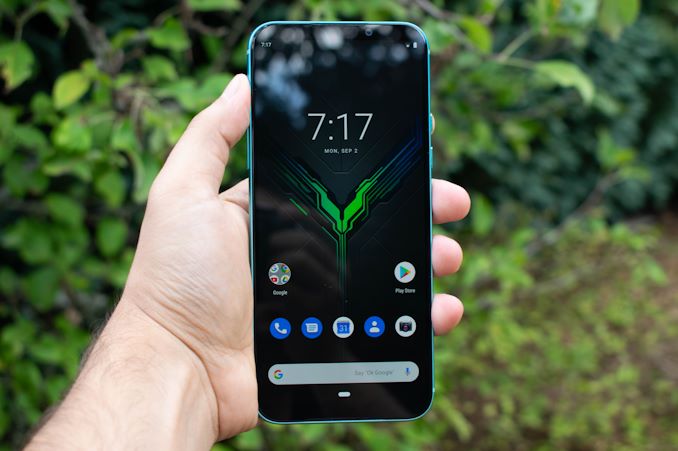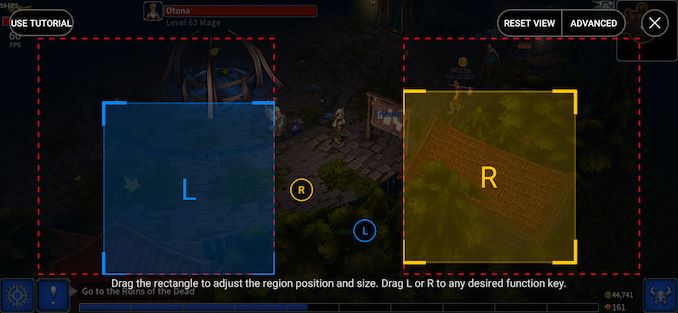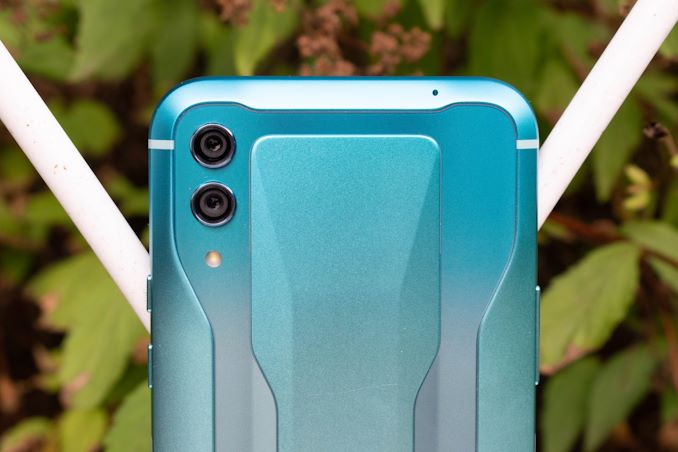The Black Shark 2 Review: A Gaming Phone's Existential Crisis
by Andrei Frumusanu on September 25, 2019 8:00 AM EST- Posted in
- Mobile
- Smartphones
- Xiaomi
- Snapdragon 855
- Black Shark 2
Conclusion & End Remarks
The Black Shark 2 is actually the first “gaming” phone that I’ve gotten to dedicate a review to. Going into the review I had a few preconceptions of what this means and what the basic checkmarks of what a gaming phone should be and what it should deliver.
First of all, in terms of design, the Black Shark 2 does put a checkmark on its “gaming aesthetics”, and the accentuated modern design elements of the phone very much remind one of the typical gaming products that consumers are accustomed.
The build quality of the phone is excellent and feels very solid; it’s also of a reasonable size and weight – keeping the size in check with delivering a gaming phone experience in a 75mm wide form-factor.
The Black Shark 2’s 6.39” AMOLED screen is quite adequate and should satisfy most users, albeit it doesn’t showcase any particular strengths and its colour calibration also seems to have larger weaknesses.
The best thing about the display is actually the touch input controller that operates at a higher-than-usual 240Hz, something that’s particularly noticeable in the scrolling latency of content and surely would also help in the touch input latency of games.
On the software side, I wasn’t too convinced of the value of the Shark gaming suite. In essence, it’s just a glorified launcher UI with a lot of gimmicks. The one real benefit I found to be actual a practical feature is the “MasterTouch” feature which allows you to map two pressure sensitive areas on the screen to two new additional adjustable UI functions in a game, essentially enabling you to turn in-game analog sticks to also serve as click-buttons, much like on a real controller joystick.
The cameras on the Black Shark 2 just aren’t very good. I had expected the phone to at least match the very good daylight processing of the Xiaomi Mi9, but alas that’s not the case, and the BS2 just doesn’t offer the same more consistent and superior camera calibration and post processing. It has worse exposure, colour balance, and details, especially on the zoom module that showcases a detrimental contrast and sharpening filter.
In low-light, the phone is actually even worse than the Mi9 due to the fact that it lacks the dedicated night mode. It’s in essence the worst camera I’ve tested in recent years.
A Gaming Phone's Existential Crisis
I mentioned I had preconceptions of what a gaming phone should be able to deliver, and the one aspect that I would value above all others in such a product, is the gaming performance that it's able to deliver.
On the CPU side of things, the BS2 fares quite OK and is about average to a little below average compared to other Snapdragon 855 devices. The benefit of this more conservative tuning is the fact that it does quite well in terms of battery life, and its 4000mAh battery does showcase itself as an advantage compared to other devices.
In terms of gaming/GPU performance, the Black Shark 2 is simply an utter disaster and an embarrassment of a device. The matter of fact here is that the phone ended up with the single worst sustained performance of any Snapdragon 855 phone in the market. The phone’s thermal throttling is very aggressive, and though it’s able to maintain very reasonable skin temperatures, it comes at a great cost of performance.
The problem here is that Xiaomi continues to try to mislead its customers as to the real performance of the phone – the firmware detects benchmarks and disables thermal throttling in order to get better scores. In this scenario of course it showcases excellent performance, but I stopped the phone in its tracks after it had reached an excess of 57°C, at which point it was uncomfortably hot to hold. The issue isn’t new to the Black Shark 2 as last year’s Black Shark behaved the same – showcasing great cheating behaviour while its real performance was just lacklustre.
Here’s the thing, the Black Shark 2 isn’t all that cheap, coming at a minimum of 549€ for the base storage model. For a phone which completely fails at the very thing it’s designed for, I can’t see how one would able to justify its purchase. The cameras are massively underwhelming, and the display is also lacklustre compared to other phones. The only redeeming features of the Black Shark 2 remains its 240Hz touchscreen, the MasterTouch feature, and above-average battery life.
Currently I just don’t see how the BS2 can justify its existence over any other regular non-gaming phone, the compromises and disadvantages vastly outweigh the one or two features which actually do benefit the phone.













63 Comments
View All Comments
Average James - Friday, September 27, 2019 - link
You can swipe to pop up Game Studio menu overlay to set performance level. It has Auto, 1~4(Max) levels for various dynamic core/clock governors as well as additional "thermal throttling level" options.Detection is only for Auto performance level and pretty much decent. It even has overlay CPU Clock/FPS counter to check current performance. You can always gear up performance level and save it per each App. Like you might want to save bettery time by turning off some graphic options in the game, and then you can set lower performance level for overall endurance. Or pitch up to maximum level with GPU overclock to beat every handset in the market.
s.yu - Saturday, September 28, 2019 - link
" I saw device skin temperatures rise to a peak of 58°C before I decided to call it quits and stop the app – the phone had gotten so hot I couldn’t comfortably hold it anymore."I don't think just increasing the thermal allowance is the solution.
Chad - Saturday, September 28, 2019 - link
Thanks for a great review, sir.